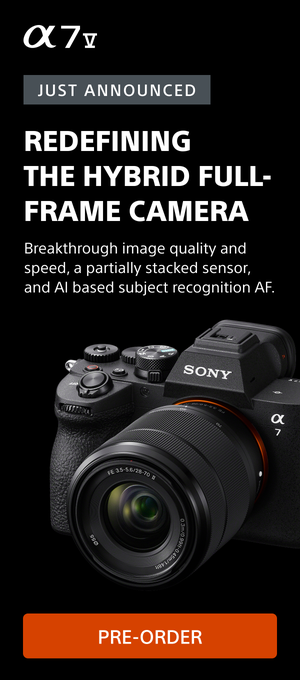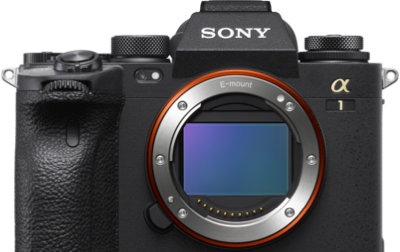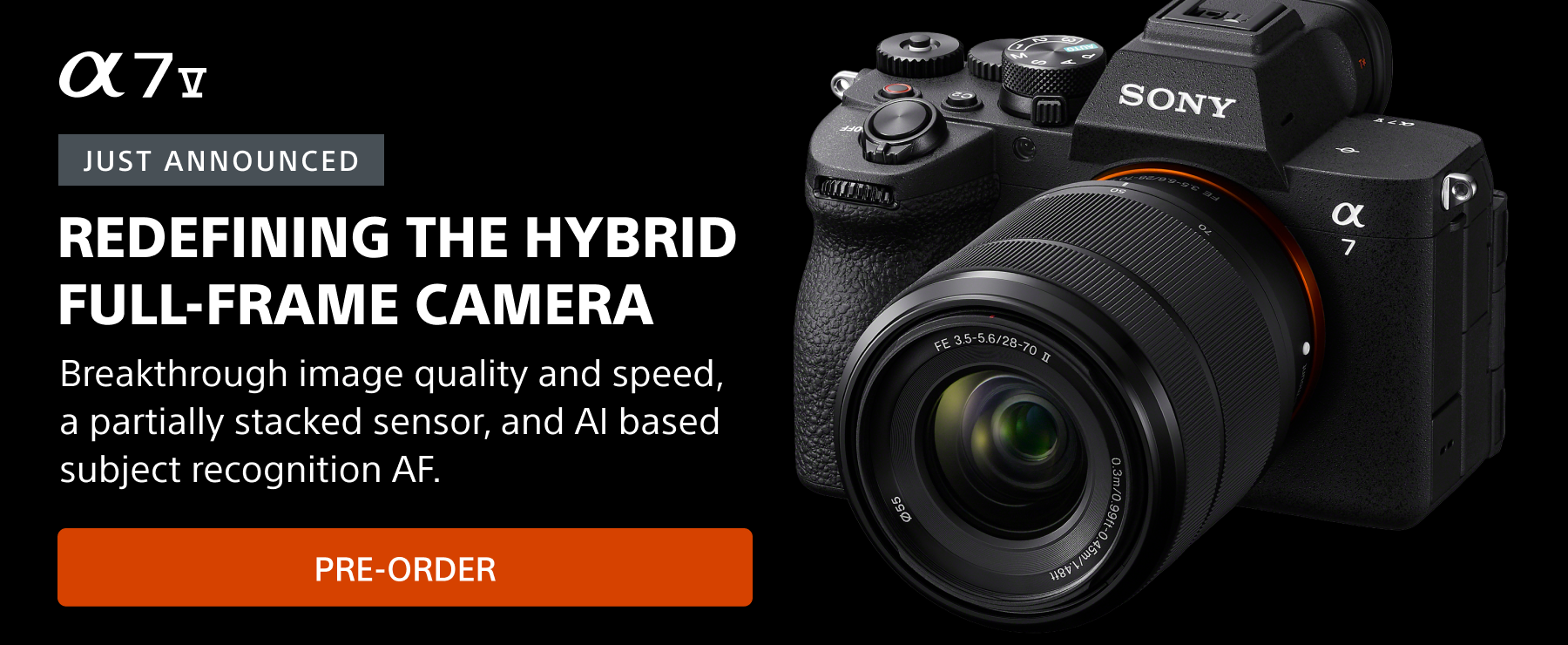Brandon Kirk is Los Angeles-based professional photographer specializing in surf and beach landscapes. "I love surf photography because it blends two of my biggest passions," he says. "There’s nothing like being in the water early in the morning when the light is just right—surf and sky merge into one. The ocean’s energy runs through me like a life force as if I'm feeling the pulse of the planet. These moments keep me coming back, fueling my creativity and deepening my connection to nature." Keep reading as Kirk shares what's in his kit for surf photography, plus a breakdown of when he uses each and the camera settings that help him capture the high-energy of surf photography.
Product Preview – In This Article You'll Find:
–Sony Alpha 7R V
–Sony Alpha 7R III
–Sony 200-600mm f/5.6-6.3 G
–Sony 70-200mm f/2.8 G Master
–Sony 24mm f/2.8 G
–Sony 40mm f/2.5 G
–Sony 50mm f/1.8
–Sony 24-70mm f/2.8 G Master
–Sony 300mm f/2.8 G Master
–Sony 1.4x Teleconverter
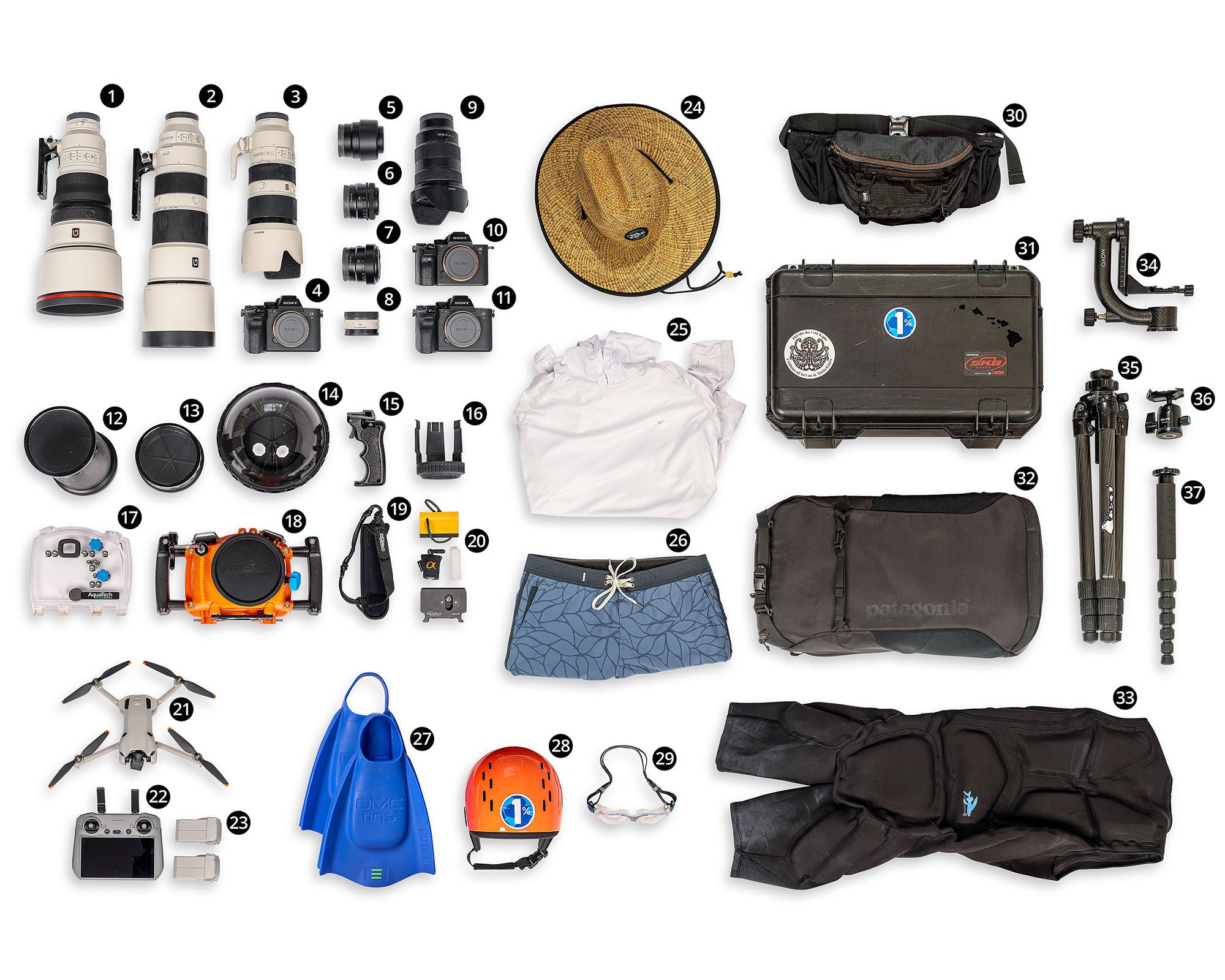
Camera
Sony Alpha 7R V & Sony Alpha 7R III: For my beach landscapes, there’s no such thing as too much detail. As a result, I’ve always opted for Sony’s high resolution cameras from the A7R III to the A7R V.

Photo by Brandon Kirk. Sony Alpha 7R III. Sony 24-70mm f/2.8 G Master. 13-sec., f/11, ISO 100
Every time I shoot with my fine art collection in mind, my goal is to create a high quality work of art that I can print large (40”x60”) and sell. In fact, I’m currently working on a 12ft by 6ft installation for a medical facility in Santa Monica. Having great detail in prints this size helps make my images more impressive and compelling.
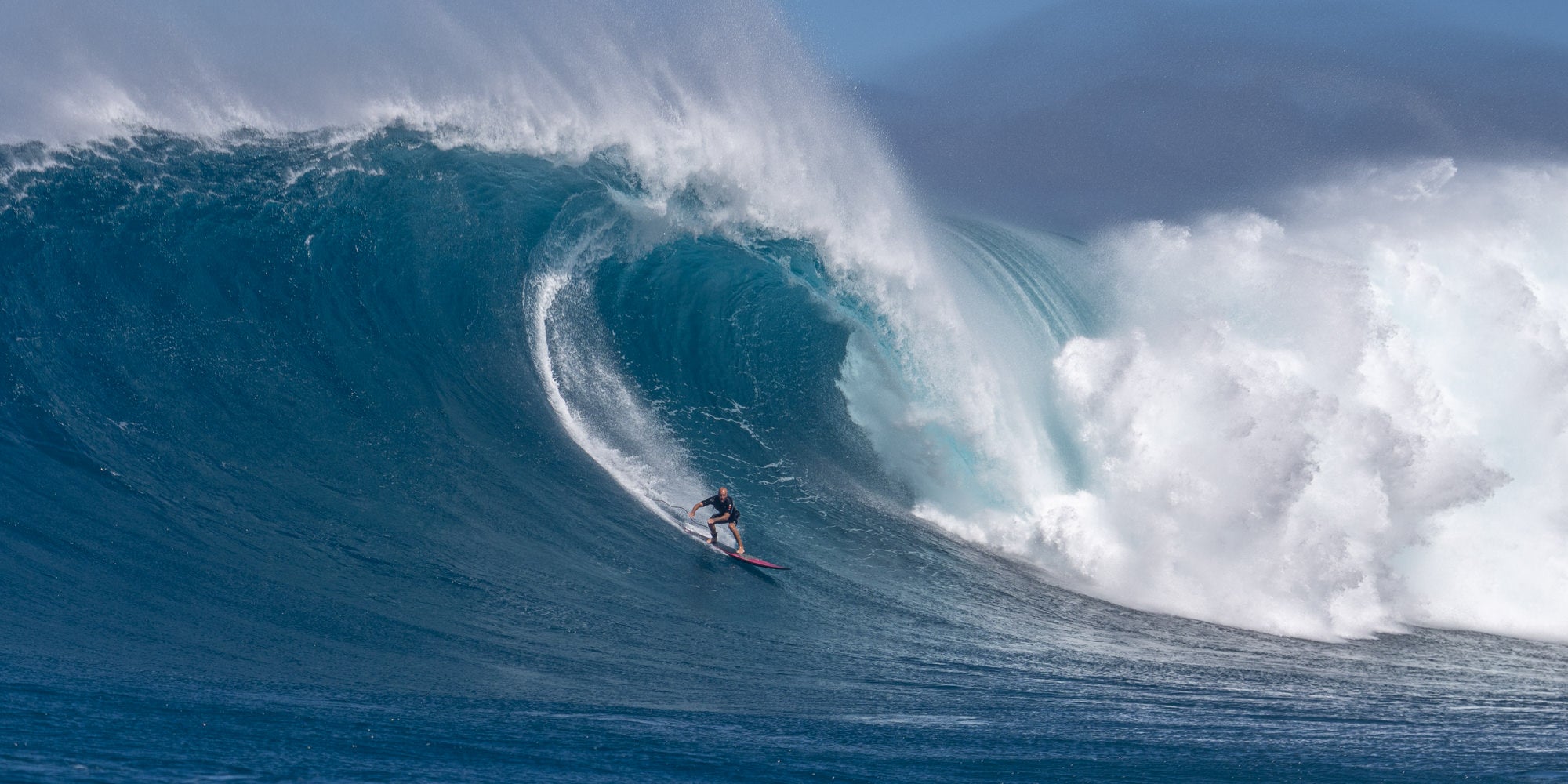
Surfer Kaiwi Berry. Photo by Brandon Kirk. Sony Alpha 7R V. Sony 70-200mm f/2.8 G Master. 1/2500-sec., f/4, ISO 100
Lenses
Sony 200-600mm f/5.6-6.3 G: As for lenses, the 200-600mm f/5.6-6.3 G is my primary lens for surf photography. Honestly, for the money, I think it’s the best value available.
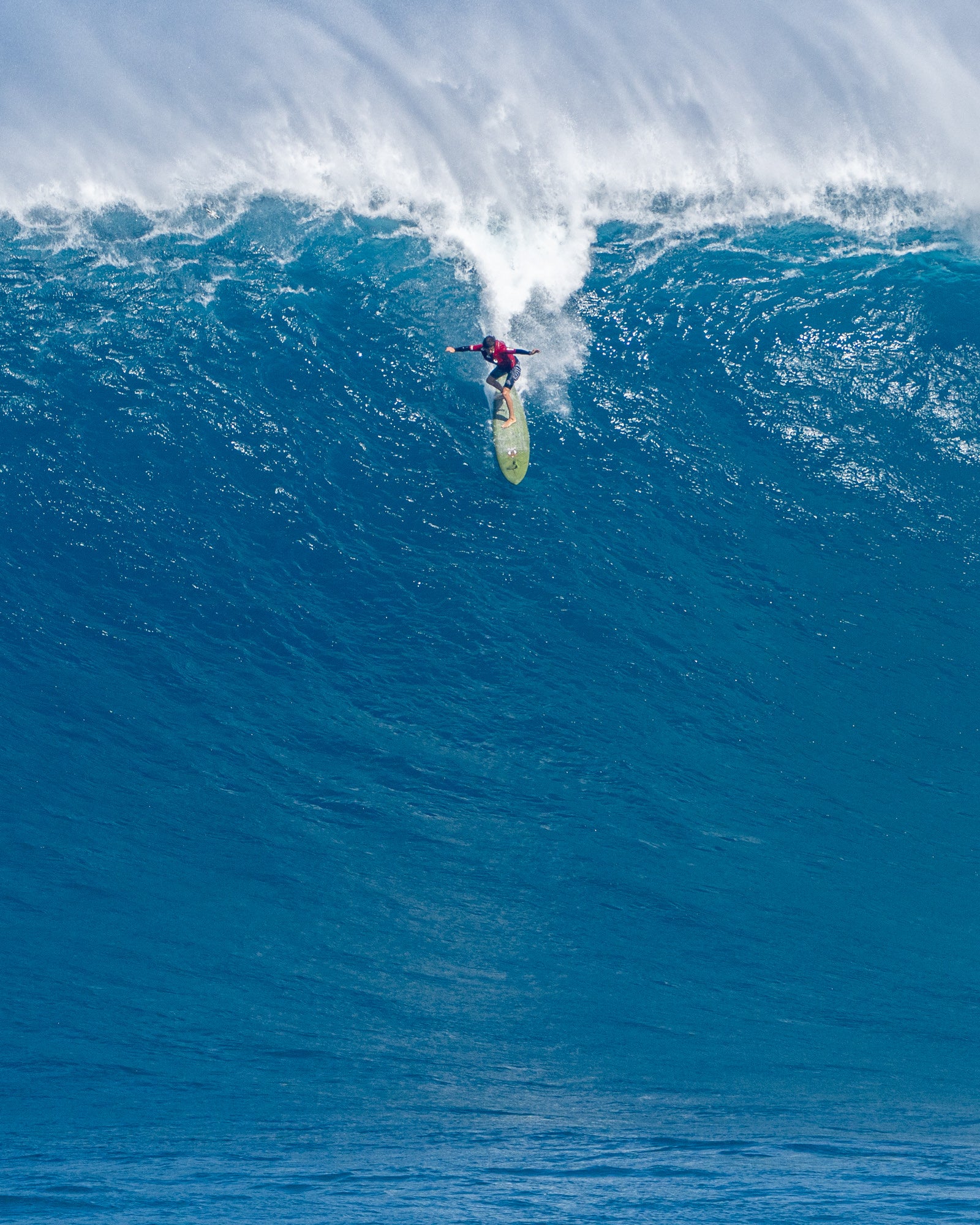
Surfer Trevor Collins. Photo by Brandon Kirk. Sony Alpha 7R V. Sony 200-600mm f/5.6-6.3 G. 1/1600-sec., f/6.3, ISO 320
Sony 70-200mm f/2.8 G Master: I also regularly use the Sony 70-200mm f/2.8 GM because of its great versatility on the beach for environmental portraits and for more distant landscape shooting. There are even some surf breaks, like the Wedge in Orange County (where the waves break very close to shore) that the 70-200mm has enough reach. Its f/2.8 aperture is essential for dawn patrol sessions before the sun is up.
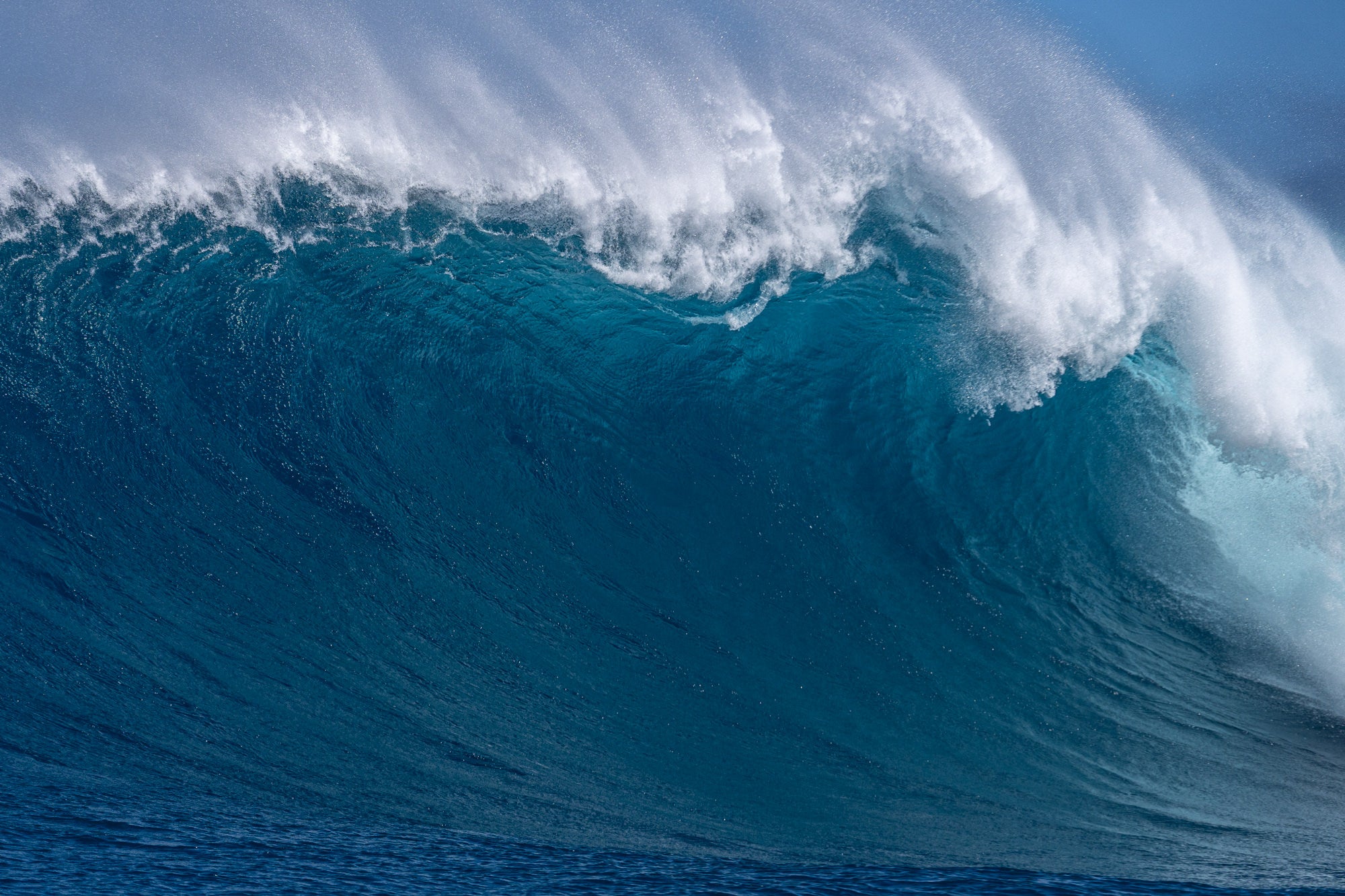
Photo by Brandon Kirk. Sony Alpha 7R V. Sony 70-200mm f/2.8 G Master. 1/2500-sec., f/4, ISO 100
Sony 24mm f/2.8 G and Sony 40mm f/2.5 G: When I’m shooting in the water, I typically use the Sony 24mm f/2.8 G lens and the 40mm f/2.5 G lens in an AquaTech underwater housing.

Photo by Brandon Kirk. Sony Alpha 7R V. Sony 24mm f/2.8 G. 1/2000-sec., f/5.6, ISO 200
Sony 50mm f/1.8: I like to use this lens for wider shots that I'll later crop into panoramas.
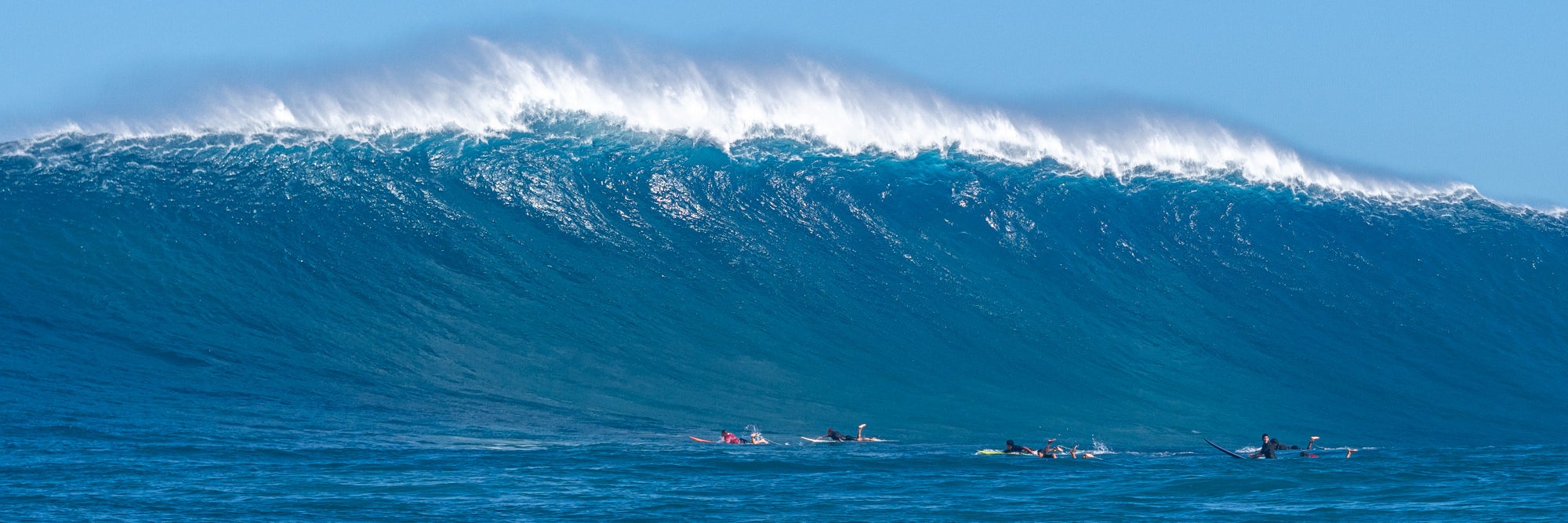
Photo by Brandon Kirk. Sony Alpha 7R V. Sony 50mm f/1.8. 1/2000-sec., f/4.5, ISO 200
Sony’s 24-70mm f/2.8 G Master: Like most landscape photographers, I use a wide angle lens, Sony’s 24-70mm f/2.8 G Master, for nearly all of my beach landscapes.
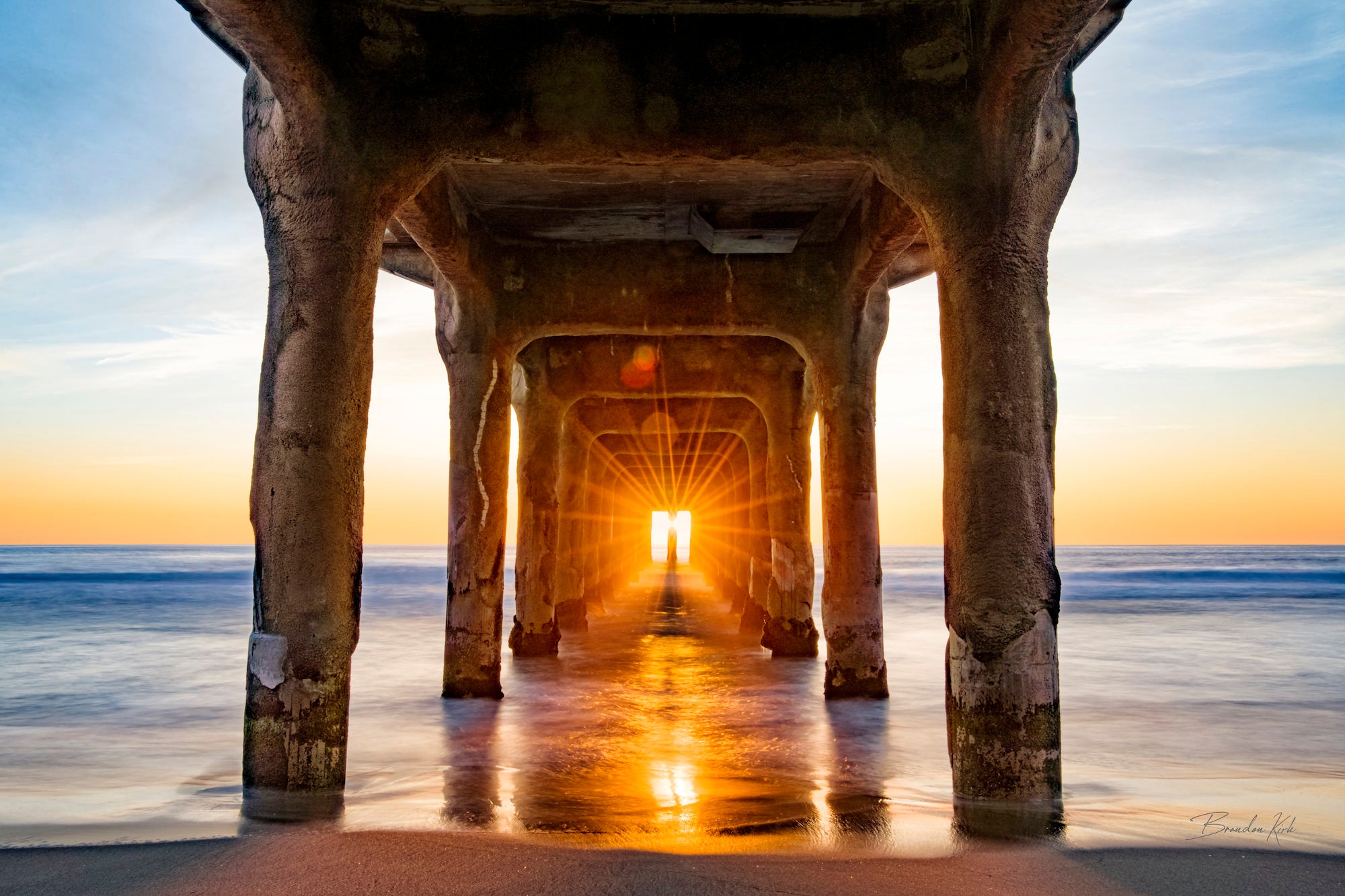
Photo by Brandon Kirk. Sony Alpha 7R III. Sony 24-70mm f/2.8 G Master. 8-sec., f/22, ISO 100
Sony 300mm f/2.8 G Master: I recently purchased the Sony 300mm f/2.8 GM lens to use on some of the beaches on the North Shore where the waves break fairly close to shore. I can easily handhold it and just love the freedom of not being tied down.
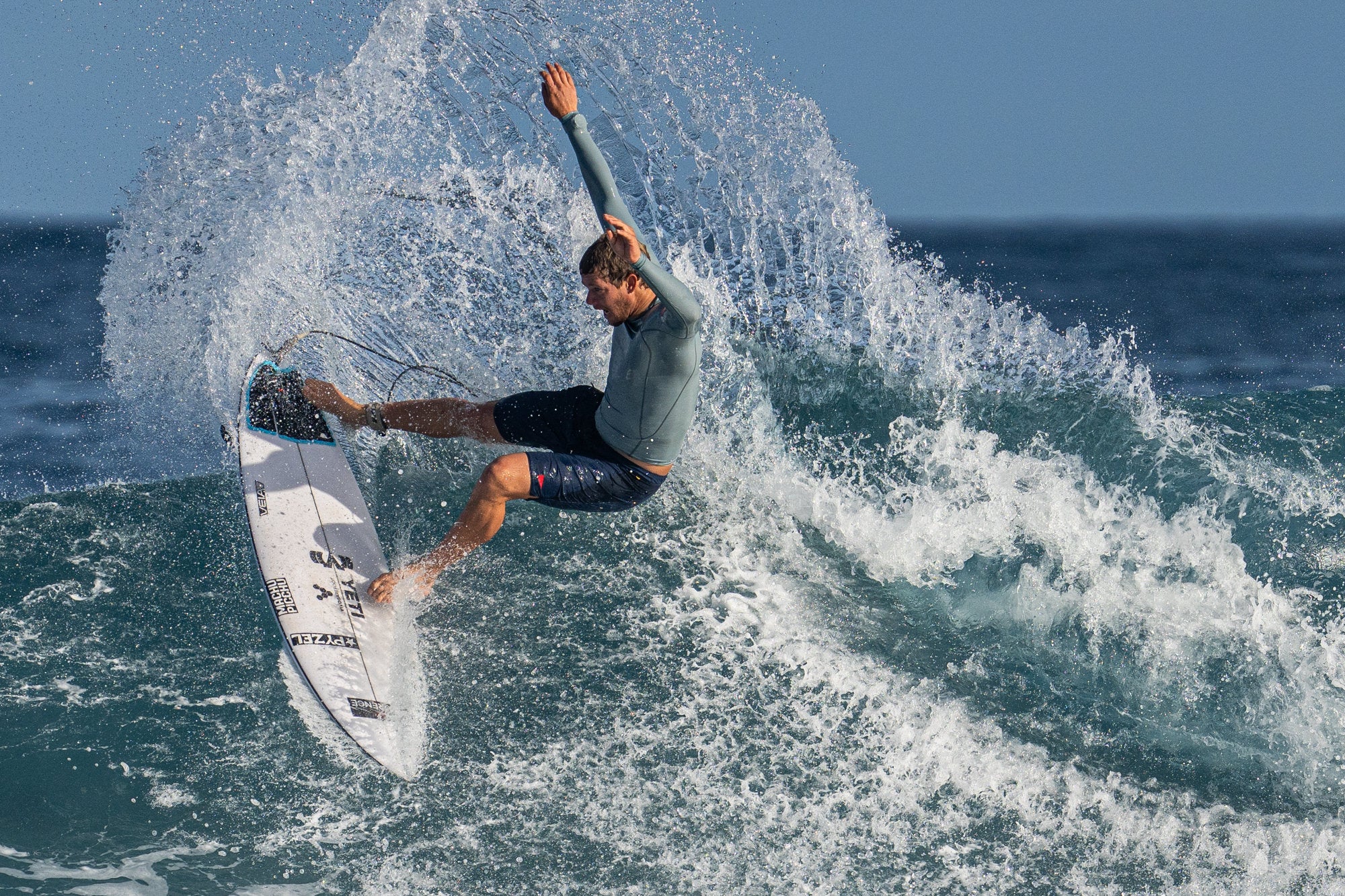
Photo by Brandon Kirk. Sony Alpha 7R V. Sony 300mm f/2.8 G Master. 1/4000-sec., f/2.8, ISO 100
Accessories
There are many accessories I use for surf photography. Here they are numbered corresponding to my gear photo:
12. AquaTech Lens Port P-215 for Sony 70-200mm f/2.8 G Master
13. AquaTech Lens Port XF-55 for my small Sony lenses
14. AquaTech 8” Dome XLD-135 for over/under shots
15. AquaTech M3 Pistol Grip for one-handed shooting
16. AquaTech Zoom Gear for Sony 70-200mm f/2.8 G Master
17. AquaTech back plate for full control of Sony Alpha 7R V
18. AquaTech EDGE Pro Water Housing for Sony Alpha 7R V
19. AquaTech wrist leash so my camera doesn’t get away from me
20. Squeegee to keep the lens ports water drop free, lens cleaning cloth, wax, camera plate
21. Drone
22. Controller for drone
23. Extra batteries for drone
24. DaKine Straw Hat, a must for long days on the beach or boat
25. UPF 50+ Long Sleeve Hoodie, another must have
26. Vuori Cruise Boardshorts because it has pockets!
27. DMC Elite II swim fins
28. Gath Neo Surf Helmet
29. Aqua Sphere Kayenne swim goggles
30. REI Trail 5 Waist Pack for extra batteries, memory cards, ND filters, cable release cord, lens cleaning splay and clothes, phone and wallet
31. SKB 3i-2011-7DL rolling hard case. This is carryon compatible and has wheels!
32. Patagonia Cragsmith 32L backpack. With the guts of the SKB case transferred to it, it’s perfect for the beach because it opens from the back.
33. Patagonia Impact Wetsuit for “increased flotation and body protection in heavy surf” that I wear and hope I don’t really need
34. Movo GH800 carbon fiber Gimbal Tripod Head
35. Slik Pro CF-934 Tripod
36. Slik PBH-635AS Ball Head
37. Sirui carbon fiber monopod
From the Beach
Surf photography is always an adventure, but some of the biggest photographic challenges come from shooting massive waves that break far offshore—sometimes hundreds of yards away. That’s often the case in Hawaii, where winter swells light up distant reefs.
Since I’m usually shooting from a quarter to a half-mile away, a long lens is a must. My go-to is the Sony 200-600mm f/5.6-6.3 G, and on extra-big days (think 30-footers at Waimea Bay), I’ll throw on Sony’s 1.4x teleconverter for even more reach. I still do significant cropping of the final images, so the A7RV’s 61MP sensor has been a lifesaver.
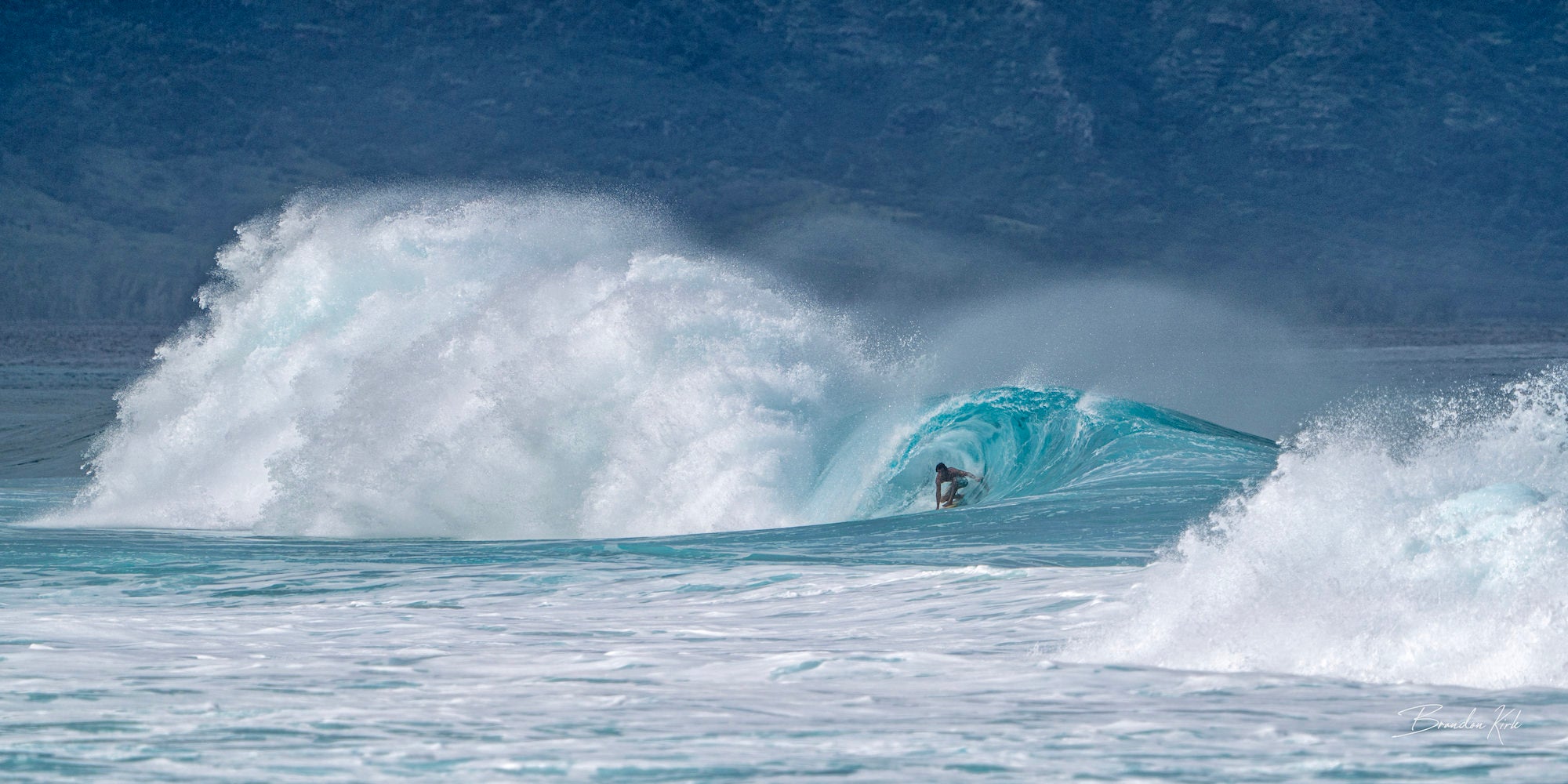
Photo by Brandon Kirk. Sony Alpha 7R V. Sony 200-600mm f/5.6-6.3 G. 1/2500-sec., f/6.3, ISO 160
Even from shore, things in the water are constantly moving—the waves and surfers. A good composition at 600mm can suddenly feel too tight as the action approaches. Since I often shoot from cliffs where there’s no option to step back, having a zoom lens is key. If I could only pick one lens for beach shooting, the 200-600mm would be it.
In the Water
The real fun begins when I put on my fins, and swim out with my camera.
I use the Sony A7R V with either the 24mm f/2.8 G or 40mm f/2.5 G lens inside an AquaTech Edge Pro housing. I love the 24mm for its ability to capture backgrounds—mountains, cliffs, or palm-lined beaches that add a sense of place.
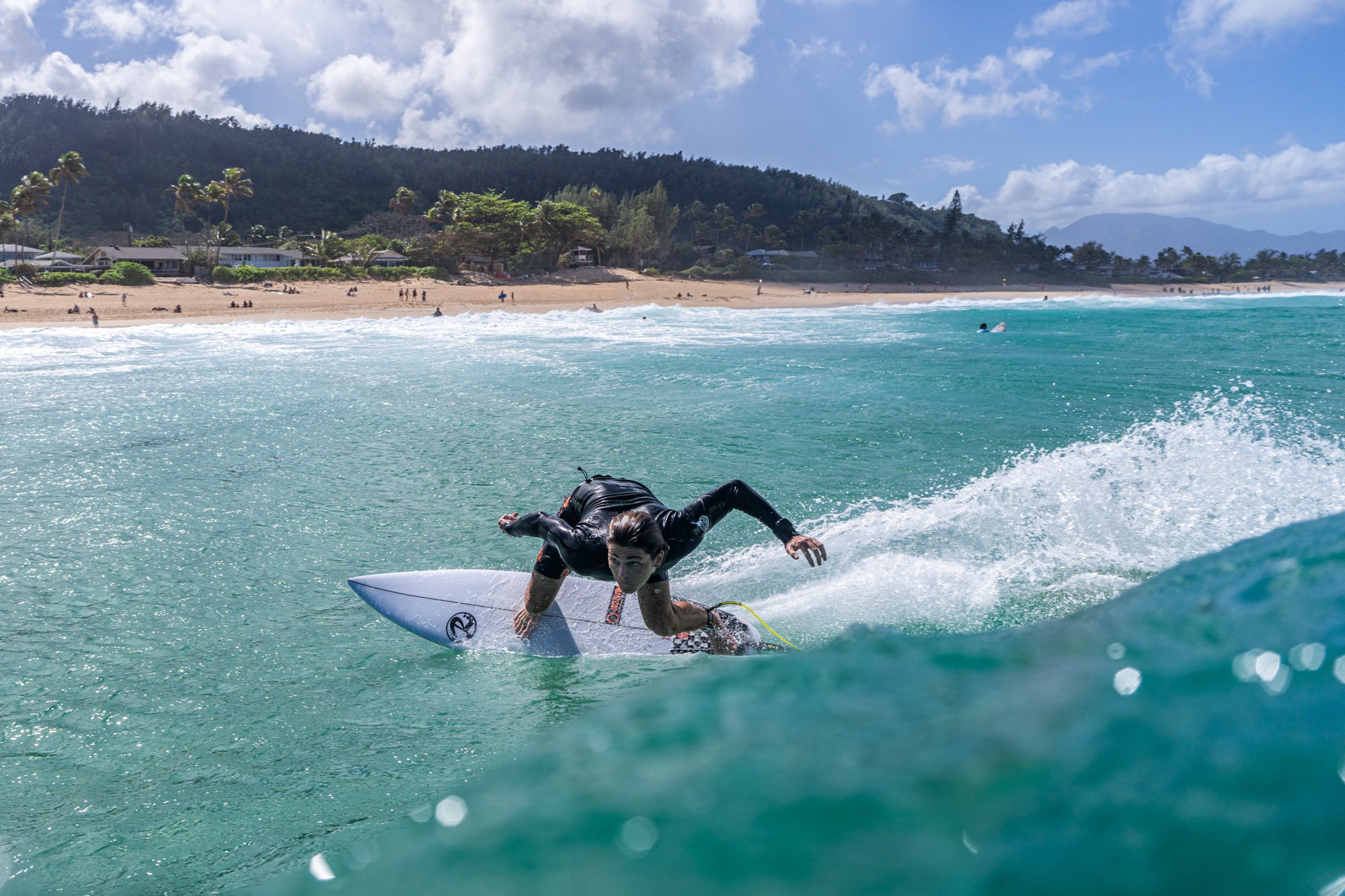
Photo by Brandon Kirk. Sony Alpha 7R V. Sony 24mm f/2.8 G. 1/2000-sec., f/5.6, ISO 125
If I need a bit more distance from a heavy break, I’ll go with the 40mm f/2.5 G. And for those dreamy, pre-dawn sessions, having f/2.8 and f/2.5 apertures really helps. With either lens, when you’re constantly diving under waves with a camera in tow, a compact setup is a great asset.
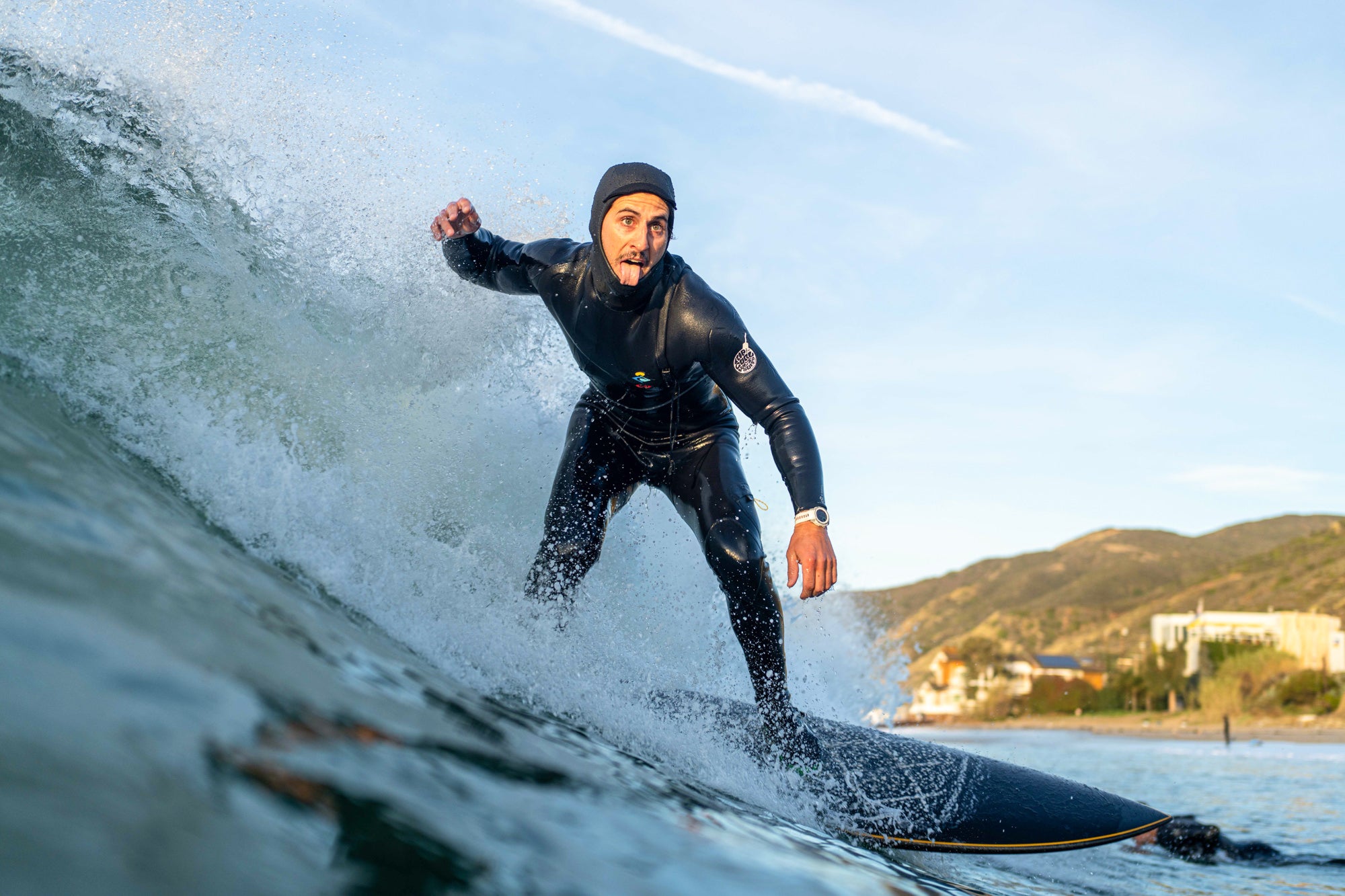
Photo by Brandon Kirk. Sony Alpha 7R V. Sony 40mm f/2.5 G. 1/800-sec., f/2.8, ISO 100
A lot of people assume surf photographers shoot from surfboards, but that’s rarely the case. Most of the time, I’m swimming, treading water, dodging surfboards, and diving under waves—all while trying to line up the perfect shot. Not easy, especially when both my subject and I are constantly moving.
Shooting in the water can be intense—and sometimes downright dangerous. Just like surfers, every photographer has to know their limits. The North Shore lifeguards have a saying: "When in doubt, don’t go out." I take that to heart. Even with 30+ years of surfing experience, a background in competitive triathlons, and regular swim training, there are still winter days on the North Shore when I don't go out.

Photo by Brandon Kirk. Sony Alpha 7R V. Sony 40mm f/2.5 G. 1/1000-sec., f/5.6, ISO 200
Camera Settings For Surf Photography
When shooting from the water, I dial in my basic camera settings on the beach before swimming out. My housing lets me tweak shutter speed, aperture, and ISO in the water, but it’s way easier to set them up beforehand.
To freeze the action, I aim for a shutter speed of at least 1/1000s—often faster. My aperture typically lands between f/2.8 and f/5.6, depending on the light and what I’m going for creatively.
I shoot in manual mode, with one key exception. Since lighting can shift fast as I pan with a surfer across a wave, I use Auto ISO but set limits—usually between 100 and 400. Letting the camera handle those micro-adjustments keeps exposure on point without me having to think about it mid-shot.
On A Jet Ski
For capturing massive waves, nothing beats shooting from water level. The lower the perspective, the bigger and more powerful the waves look. In December 2024, after a heads-up from some big-wave surfer friends, I rushed to Jaws (aka Peʻahi) on the north shore of Maui to witness what locals called the biggest swell to hit Hawaii in 25+ years. I shot from a jet ski and mostly used the Sony A7R V paired with the 70-200mm f/2.8 GM—a perfect combo for capturing those monstrous waves from a safe(ish) distance.
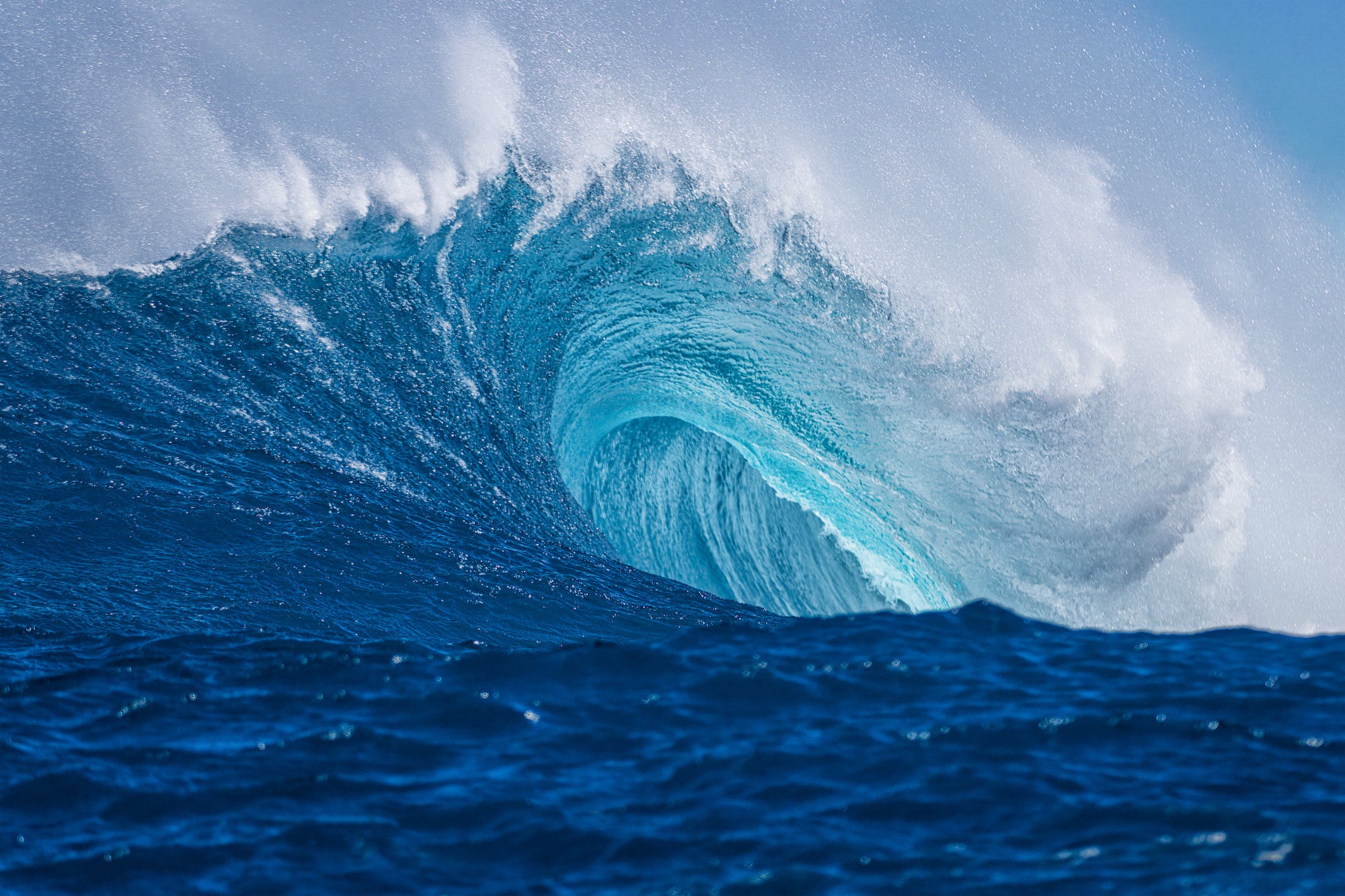
Photo by Brandon Kirk. Sony Alpha 7R V. Sony 70-200mm f/2.8 G Master. 1/3200-sec., f/2.8, ISO 100
Since I was able to get closer to the action than expected, I also used the Sony 50mm f/1.8. I loved how the wider shots turned out, many of which I later cropped into panoramas (2x1 or 3x1) for that cinematic feel.
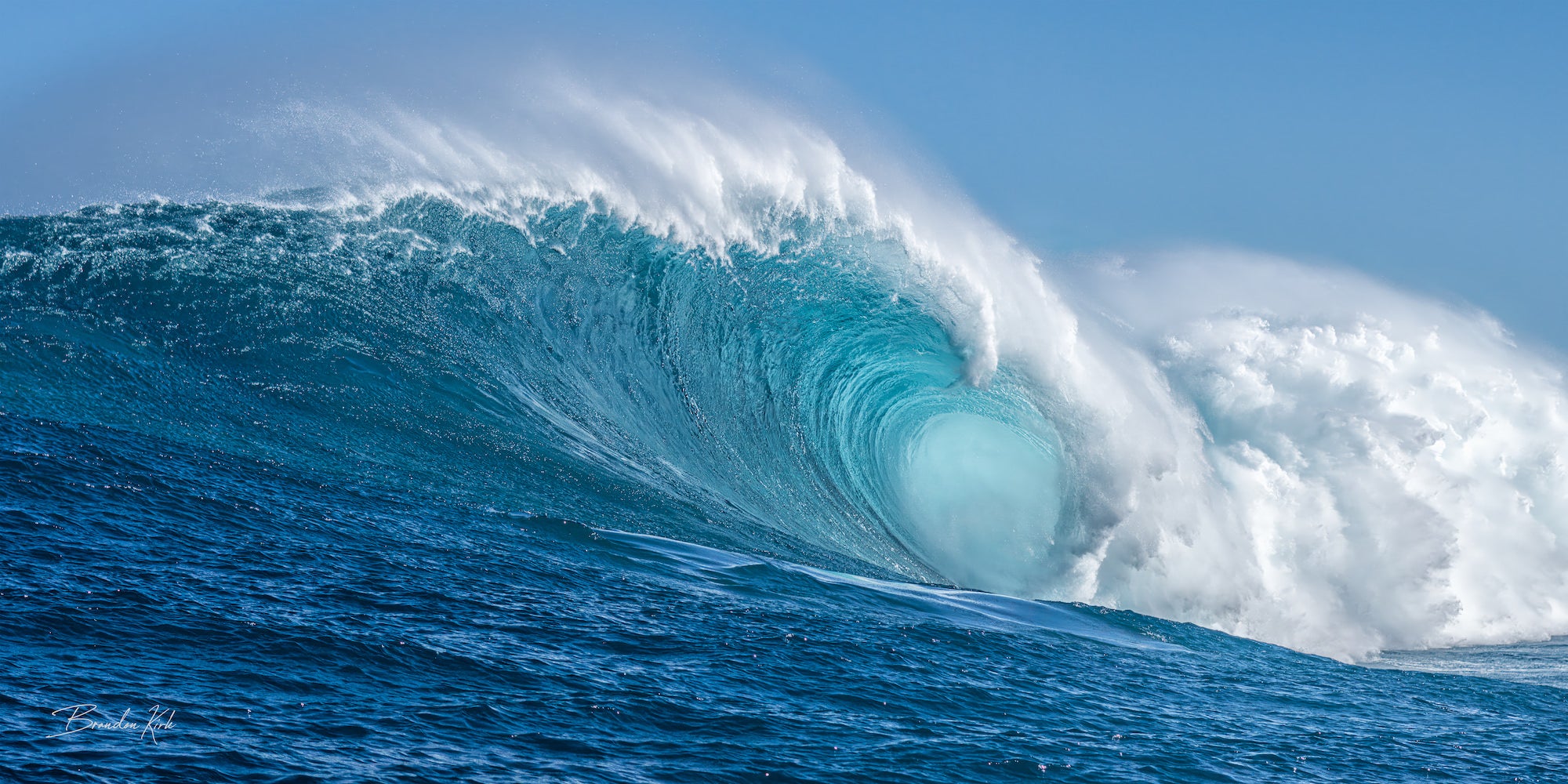
Photo by Brandon Kirk. Sony Alpha 7R V. Sony 50mm f/1.8. 1/2000-sec., f/4.5, ISO 200
Recent Purchase
Lately, I’ve been testing out the Sony 300mm f/2.8 GM, especially at breaks like Pipeline, Backdoor, and Off the Wall, where the waves jack up closer to shore. This lens is ridiculously sharp and lightweight, making it easy to shoot handheld—no tripod or monopod needed. I’m stoked to push its limits and see what else I can do with it.
See more of Brandon Kirk's work on Instagram @brandonkirk and at BrandonKirk.com.






























